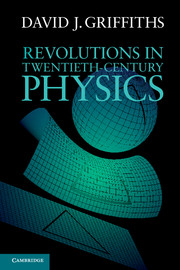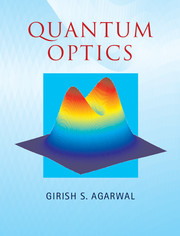Refine search
Actions for selected content:
3361 results in Quantum Physics, Quantum Information and Quantum Computation
12 - Transitions and dissipation
- from Part IV - Dissipative Quantum Mechanics
-
- Book:
- Advanced Quantum Mechanics
- Published online:
- 05 February 2013
- Print publication:
- 03 January 2013, pp 290-314
-
- Chapter
- Export citation
Part V - Dissipative Quantum Mechanics
-
- Book:
- Advanced Quantum Mechanics
- Published online:
- 05 February 2013
- Print publication:
- 03 January 2013, pp 315-316
-
- Chapter
- Export citation
1 - Elementary quantum mechanics
- from Part I - Second Quantization
-
- Book:
- Advanced Quantum Mechanics
- Published online:
- 05 February 2013
- Print publication:
- 03 January 2013, pp 3-42
-
- Chapter
- Export citation
10 - Coherent states
- from Part III - Fields and Radiation
-
- Book:
- Advanced Quantum Mechanics
- Published online:
- 05 February 2013
- Print publication:
- 03 January 2013, pp 240-266
-
- Chapter
- Export citation
5 - Superconductivity
- from Part II - Examples
-
- Book:
- Advanced Quantum Mechanics
- Published online:
- 05 February 2013
- Print publication:
- 03 January 2013, pp 113-134
-
- Chapter
- Export citation

Revolutions in Twentieth-Century Physics
-
- Published online:
- 05 December 2012
- Print publication:
- 08 November 2012

Quantum Optics
-
- Published online:
- 05 December 2012
- Print publication:
- 15 November 2012
-
- Textbook
- Export citation

The Angular Momentum of Light
-
- Published online:
- 05 December 2012
- Print publication:
- 08 November 2012
19 - Single photons and nonclassical light in integrated structures
-
- Book:
- Quantum Optics
- Published online:
- 05 December 2012
- Print publication:
- 15 November 2012, pp 432-454
-
- Chapter
- Export citation
1 - Quantized electromagnetic field and coherent state representations
-
- Book:
- Quantum Optics
- Published online:
- 05 December 2012
- Print publication:
- 15 November 2012, pp 1-27
-
- Chapter
- Export citation
17 - Coherent control of the optical properties
-
- Book:
- Quantum Optics
- Published online:
- 05 December 2012
- Print publication:
- 15 November 2012, pp 385-412
-
- Chapter
- Export citation
16 - Decoherence and disentanglement in two-level systems
-
- Book:
- Quantum Optics
- Published online:
- 05 December 2012
- Print publication:
- 15 November 2012, pp 370-384
-
- Chapter
- Export citation
5 - Optical interferometry with single photons and nonclassical light
-
- Book:
- Quantum Optics
- Published online:
- 05 December 2012
- Print publication:
- 15 November 2012, pp 103-137
-
- Chapter
- Export citation
Frontmatter
-
- Book:
- Quantum Optics
- Published online:
- 05 December 2012
- Print publication:
- 15 November 2012, pp i-vi
-
- Chapter
- Export citation
18 - Dispersion management and ultraslow light
-
- Book:
- Quantum Optics
- Published online:
- 05 December 2012
- Print publication:
- 15 November 2012, pp 413-431
-
- Chapter
- Export citation
Preface
-
- Book:
- Quantum Optics
- Published online:
- 05 December 2012
- Print publication:
- 15 November 2012, pp xv-xvi
-
- Chapter
- Export citation
Contents
-
- Book:
- Quantum Optics
- Published online:
- 05 December 2012
- Print publication:
- 15 November 2012, pp vii-xiv
-
- Chapter
- Export citation
10 - Amplification and attenuation of quantum fields
-
- Book:
- Quantum Optics
- Published online:
- 05 December 2012
- Print publication:
- 15 November 2012, pp 220-241
-
- Chapter
- Export citation
7 - Absorption, emission, and scattering of radiation
-
- Book:
- Quantum Optics
- Published online:
- 05 December 2012
- Print publication:
- 15 November 2012, pp 158-178
-
- Chapter
- Export citation
8 - Partial coherence in multimode quantum fields
-
- Book:
- Quantum Optics
- Published online:
- 05 December 2012
- Print publication:
- 15 November 2012, pp 179-199
-
- Chapter
- Export citation
